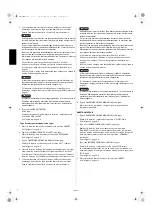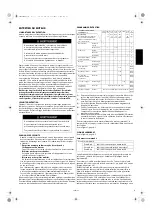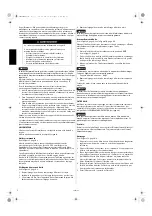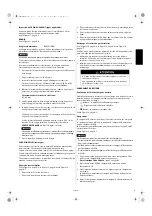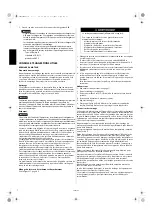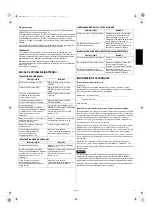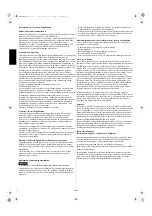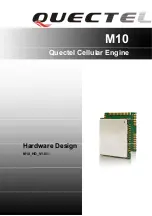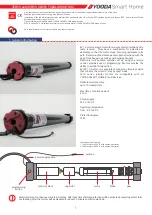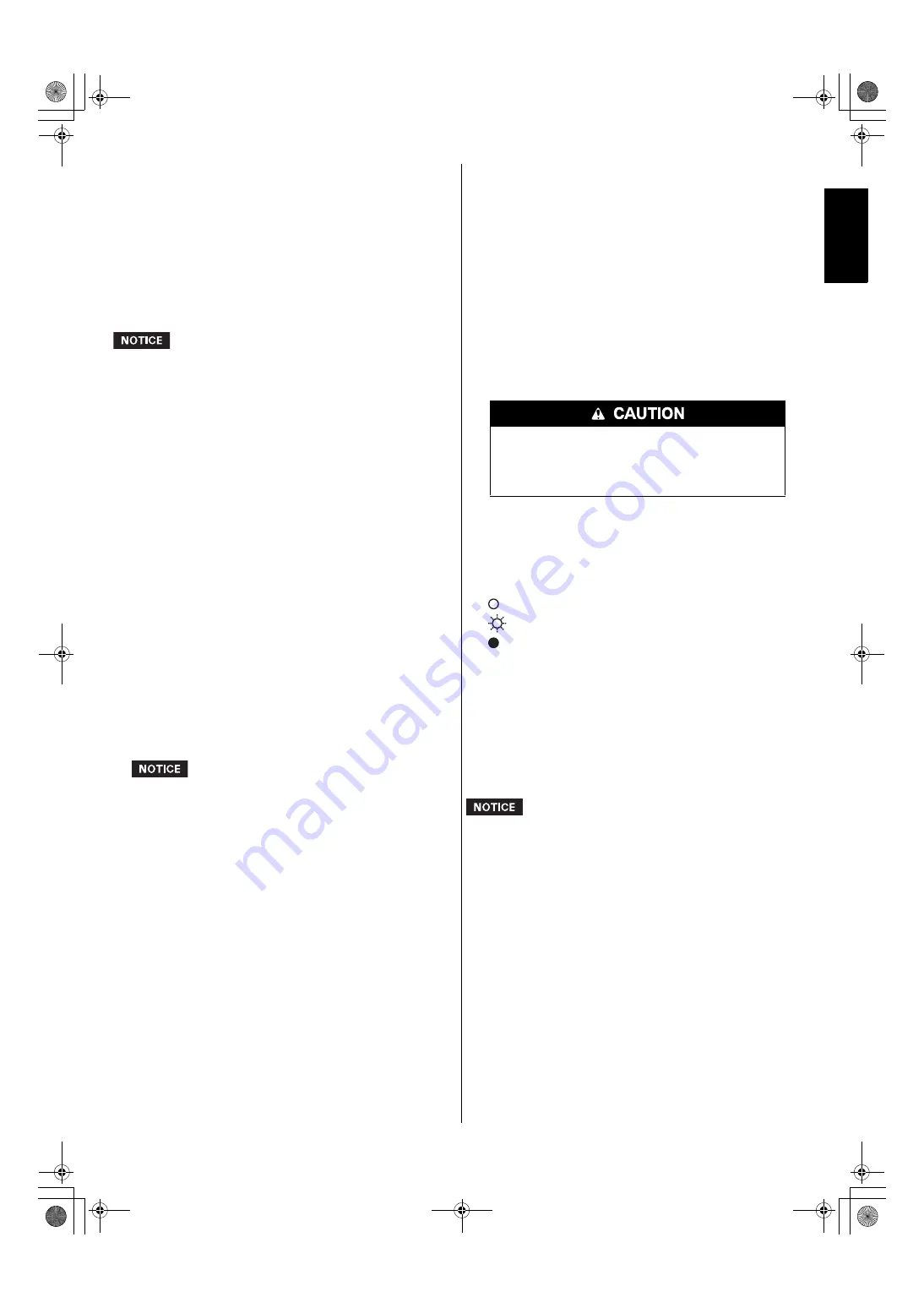
ENGLISH
6
FLYWHEEL BRAKE Inspection (applicable types)
Check the flywheel brake lever clearance. If it is less than 2 mm (0.08 in),
take the engine to an authorized Honda dealer.
See Figure 11, page A-3.
SPARK PLUG
See Figure 13, page A-4.
Recommended Spark Plug:
BPR5ES (NGK)
The recommended spark plug has the correct heat range for normal
engine operating temperatures.
An incorrect spark plug can cause engine damage.
If the engine has been running, let it cool before servicing the spark plug.
For good performance, the spark plug must be properly gapped and free
of deposits.
1. Disconnect the spark plug cap, and remove any dirt from around the
spark plug area.
2. Remove the spark plug with the spark plug wrench.
3. Visually inspect the spark plug. Discard the spark plug if there is
apparent wear, or if the insulator is cracked or chipped.
Clean the spark plug with a wire brush if it is to be reused.
4. Measure the spark plug electrode gap with a feeler gauge. Correct as
necessary by bending the side electrode.
The gap should be:
0.7–0.8 mm (0.028
–
0.031 in)
5. Check that the spark plug washer is in good condition and thread the
spark plug in by hand to prevent cross-threading.
6. After the spark plug is seated, tighten with the spark plug wrench to
compress the washer.
When installing a new spark plug, tighten 1/2 turn after the spark
plug seats to compress the washer.
When reinstalling a used spark plug, tighten 1/8–1/4 turn after the
spark plug seats to compress the washer.
TORQUE:
20 N∙m (15 lbf∙ft, 2.0 kgf∙m)
A loose spark plug can overheat and damage the engine.
Overtightening the spark plug can damage the threads in the cylinder
head.
7. Attach the spark plug cap to the spark plug.
SPARK ARRESTER (applicable types)
In some areas, it is illegal to operate an engine without a spark arrester.
Check local laws and regulations. A spark arrester is available from
authorized Honda servicing dealers.
The spark arrester must be serviced every 100 hours to keep it
functioning as designed.
If the engine has been running, the muffler will be hot. Allow it to cool
before servicing the spark arrester.
Spark Arrester Removal
See Figure 14, page A-4, Figure 15, page A-4 and Figure 16, page A-5.
1. Remove the screw and spring nut.
2. Remove the fuel tank cap.
3. Remove the top cover by unhooking the four tabs of the top cover.
4. Remove the muffler protector by removing the three 6 mm bolts.
5. Remove the spark arrester from the muffler by removing the screw.
(Taking care not to damage the wire mesh.)
Spark Arrester Cleaning & Inspection
See Figure 14, page A-4, Figure 15, page A-4 and Figure 16, page A-5.
Check for carbon deposits around the exhaust port and spark arrester,
and clean if necessary.
1. Use a brush to remove carbon deposits from the spark arrester
screen. Be careful not to damage the screen. Replace the spark
arrester if it has breaks or holes.
2. Install the spark arrester, muffler, top cover and fuel tank cap in the
reverse order of disassembly.
BATTERY CHARGE
Check the Battery Charge State
The battery indicator indicates the battery charge state. Clutch the brake
lever of the equipment powered by this engine to make sure the amount
of charge.
–
(On): The battery is charged enough.
–
(Flash): The battery is low.
–
(Off ): The battery is almost empty.
See Figure 18, page A-5.
Charging
The external USB charger included in the package is for emergency.
Charging is possible by connecting the external USB charger to USB
charging port.
The external USB charger plug can be used for type C or BF by replacing
plugs.
See Figure 18, page A-5.
Please be aware of the following points when charging.
• Avoid use in a place where dust can easily get inside the charging port.
• Make sure to stop the engine before connecting the external USB charger
to USB charging port.
• Do not let the USB charging port and the external USB charger get wet
with liquid.
1. Remove the rubber cap from the USB charging port, and connect the
external USB charger to an outlet.
100–240 VAC electric outlet:
C type or BF type
2. Connect the USB terminal of the external USB charger to the USB
charging port.
3. The battery indicator starts flashing, and then charging starts.
When the battery indicator lights on, the battery will be fully charged.
4. After charging, disconnect the external USB charger from the engine
and an outlet.
Do not operate the engine when the top cover is
removed.
You may be injured from the rotating parts or burned by
the muffler.
3RZ9S8000.book 6 ページ 2019年9月3日 火曜日 午後4時17分




















